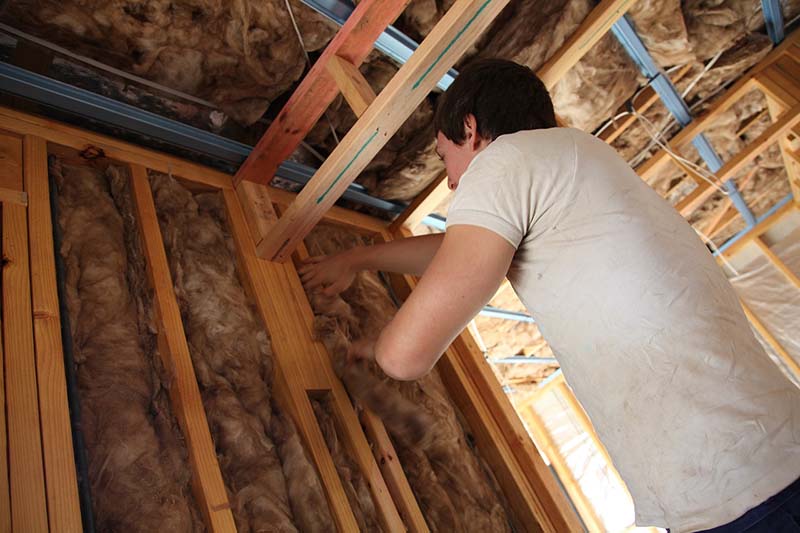Does Energy Efficient Siding Exist? Advantages, Options, & FAQ
-
Pete Ortiz
- Last updated:

Siding is a material used to protect the outside of your home from exposure to the elements and keep the temperature inside balanced while adding an aesthetically pleasing finish. If you are eco-conscious and looking to build your home alongside those principles, you may wonder if energy-efficient siding exists.
It certainly does! Modern siding is more energy-efficient than ever. It has been designed for durability and energy efficiency, to be even more environmentally conscious, and to lower your household’s electricity consumption, saving you money.
What is Energy-Efficient Siding?

Being energy efficient means not wasting energy using electricity and other limited resources. Energy-efficient siding can help the environment by reducing energy consumption. Siding must insulate a house better than other brands in order to be considered energy efficient.
Furthermore, energy-efficient siding should reduce heat and air loss by approximately 19% while maintaining consistent and comfortable temperatures throughout your home’s interior all year. As a result, you’ll need to use less energy to cool and heat your home.
How can you tell if your siding is energy efficient? The R-value is the first thing to consider. The insulation material’s thermal resistance is measured in R-value. An insulator’s R-value indicates how well it retains heat per inch of depth. Siding with inadequate insulation will have a low R-value, while energy-efficient siding will have a high R-value. The higher the R-value, the better the material will insulate your home or building.
Advantages of Energy-Efficient Siding
Saves you Money
Installing energy-efficient siding can lower your utility costs by reducing your energy consumption. It is also more durable and cheaper to maintain. You can increase the value of your home by installing energy-efficient siding.
Durable
The insulation in energy-efficient siding is a foam backing that effectively seals the gap between the siding and the wall, which prevents moisture from penetrating and causing damage. It also acts as a buffer, so it is not damaged by impact. Foam backing insulation also seals the gap between the siding and your home’s outside wall, preventing insects and small rodents from entering.
Reduced Noise Pollution
Noise levels are reduced because the insulated siding prevents the sound from entering your home. You can enjoy an afternoon nap while someone mows the lawn without being interrupted by loud or sudden sounds.
Energy-Efficient Siding Options
Siding can be made from a variety of materials at various prices. Here are some of the best energy-efficient siding options:
Fiber Cement Siding
When wooden fibers, cement, and sand are combined, a composite material known as fiber cement is formed. The material is strong enough to provide protection while remaining sufficiently flexible and is low-maintenance and long-lasting.
With an R-value of less than one, fiber cement siding is not the best insulator on its own, but it is fire and moisture-resistant and will not attract termites or other pests.
Vinyl Siding
Vinyl is a common choice for energy-efficient siding, especially along the coastlines, because of its durability in harsh weather. It’s long-lasting, water resistant, and deflects sunlight, which prevents a house from becoming even hotter in the summer.
Homeowners do not need to replace siding frequently because vinyl can last for more than 20 years, which is another energy-efficient appeal.
Vinyl has an R-value of less than one. If you want to increase the normal R-value of vinyl, combine it with some insulating foam to get an R-value of 2-3.
Wood Siding
Wood is a renewable, eco-friendly siding material that adds a lovely finishing touch to any home. The loss of trees is still a concern for some, but wood is still one of the most sustainable options.
Cedar is biodegradable and an excellent natural insulator with an R-value of 0.87, making it a sustainable choice. When treated, it is also pest-resistant, water, fire, and weather-resistant.
Steel Siding
Steel siding is becoming popular for homeowners because it is durable, solid, and requires little maintenance. It is seamless and does an excellent job of preventing leaks. Steel siding is energy-efficient because it deflects the sun’s rays away from a building and can also be used with insulating foam to improve energy efficiency.

What Is the Best Energy-Efficient Siding
Each material has advantages and disadvantages, but insulated vinyl is the most energy-efficient option.
The beauty of vinyl siding is that it comes in various colors, and it will keep its color for an extended period. If you want to maximize energy efficiency, choose a color according to your climate. Darker-colored vinyl siding absorbs more heat, while lighter-colored siding keeps your home cool.
Vinyl does not need to be painted, stained, or caulked. It is also a recyclable building material. Not only does it look good, but it is durable and strong. It can withstand winds of up to 110 mph, reduce noise by 40%., and is resilient to damage from impact.
From a maintenance point of view, it does not crack, swell, or warp and is not vulnerable to insects like termites. To keep it clean, you only need some soap and a garden hose.
Conclusion
Your home’s siding is just one way to keep your home energy efficient, and plenty of options are available. It effectively lowers your utility bill and energy consumption at home while maintaining comfortable indoor temperatures throughout the year.
Not only can it save you money and energy, but it can improve the overall appearance of your home, and together with its energy efficiency, it can increase the value of your home if you decide to sell it in the future. While the best energy-efficient siding is relative to each individual and has pros and cons, insulated vinyl is considered the best.
- https://rgbconstructionservices.com/does-energy-efficient-siding-exist/#:~:text=More%20modern%20siding%20is%20more,It%20sure%20does.
- https://energysavings.com/blog/advice/energy-efficient-siding-benefits-options/
- https://www.saveonenergy.com/resources/siding-affects-energy-efficiency/
- https://homegardenguides.com/siding/energy-efficient-siding/
Featured Image Credit: Radovan1, Shutterstock
Contents



